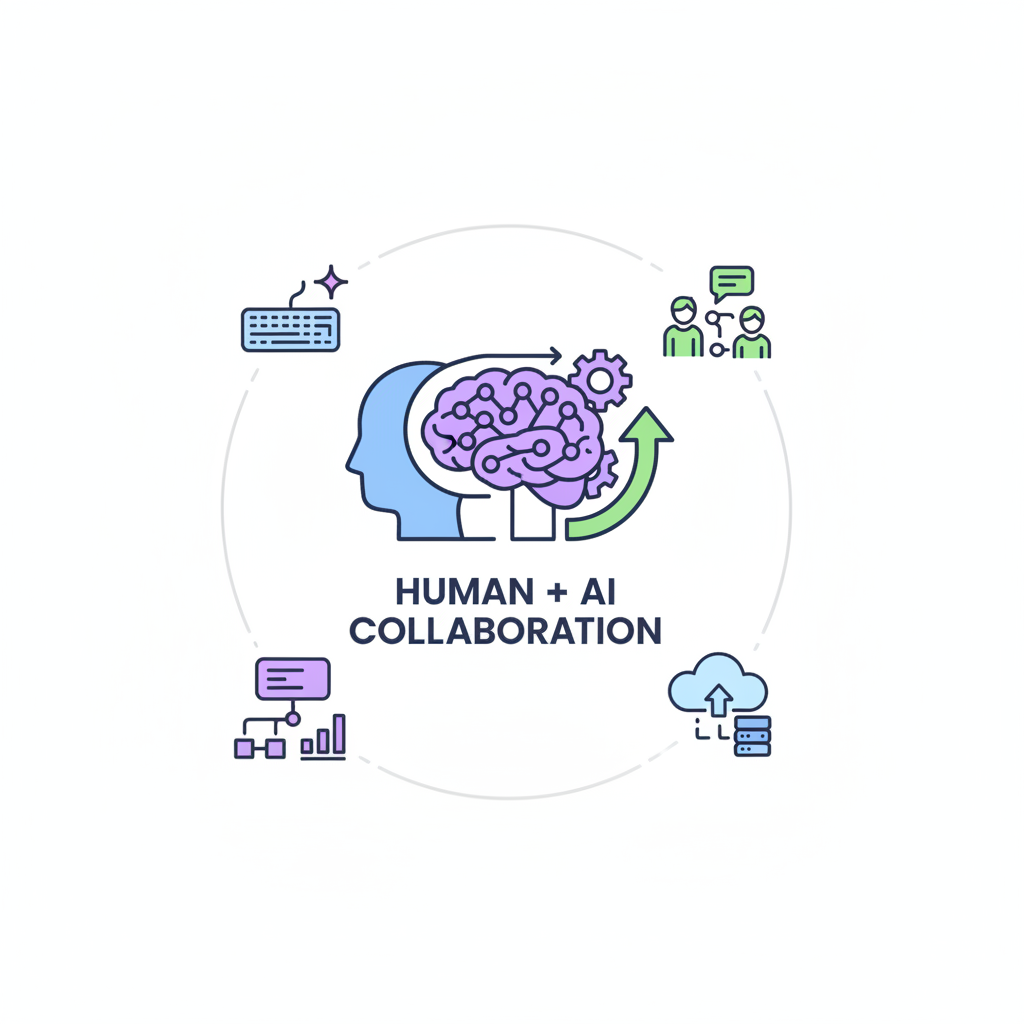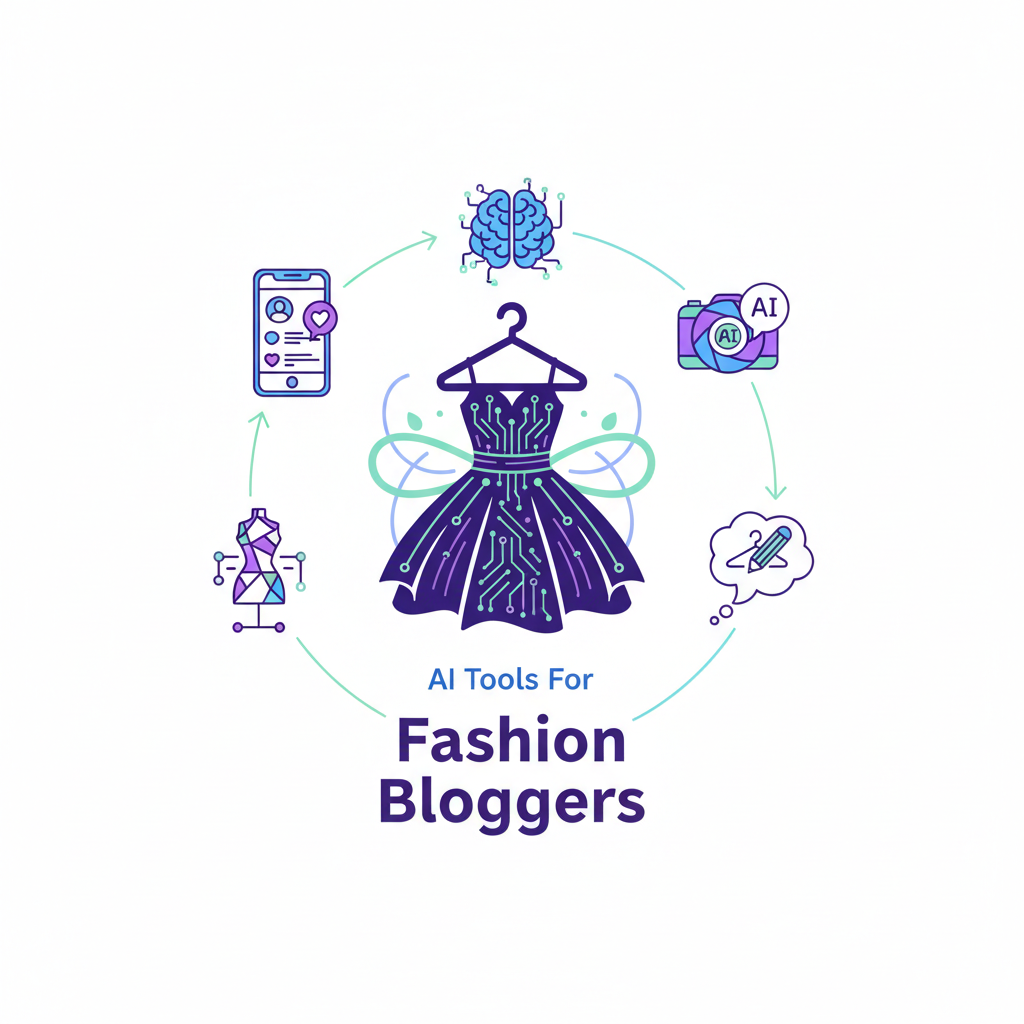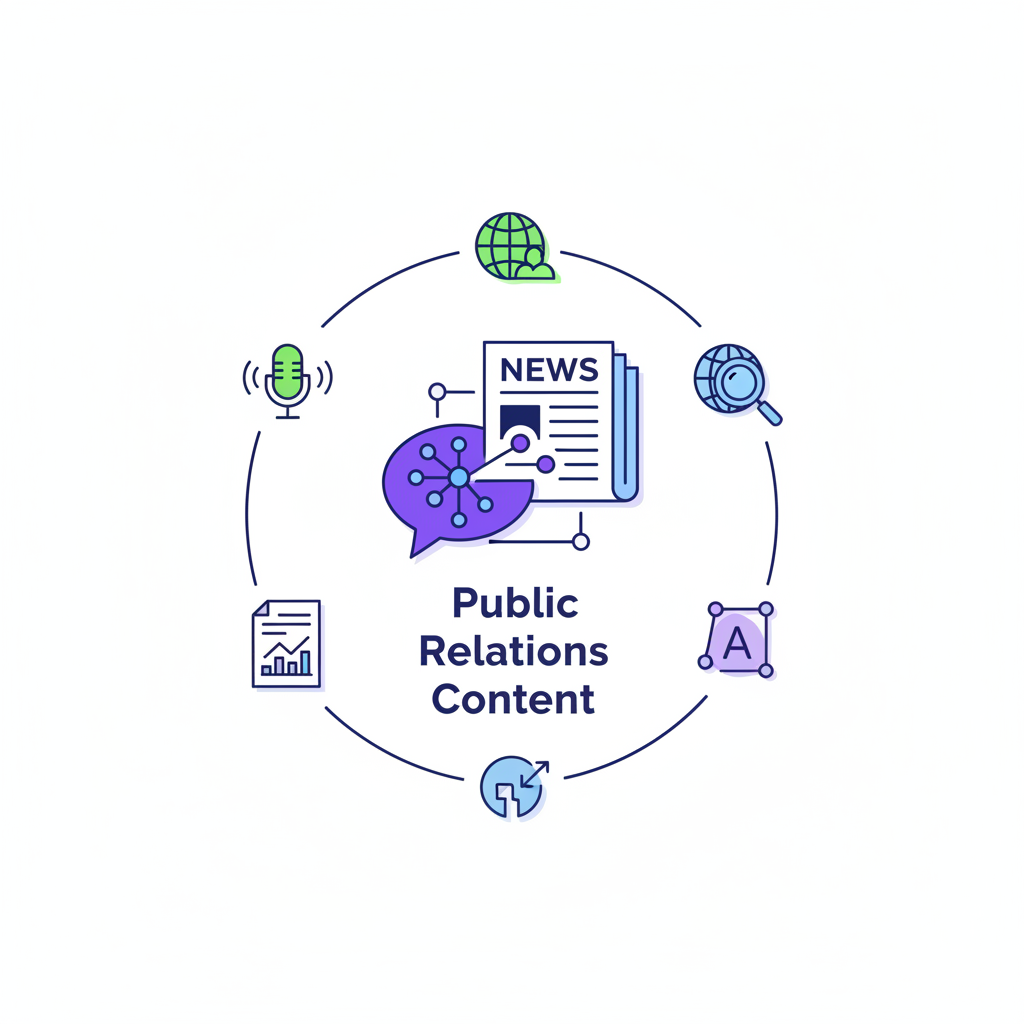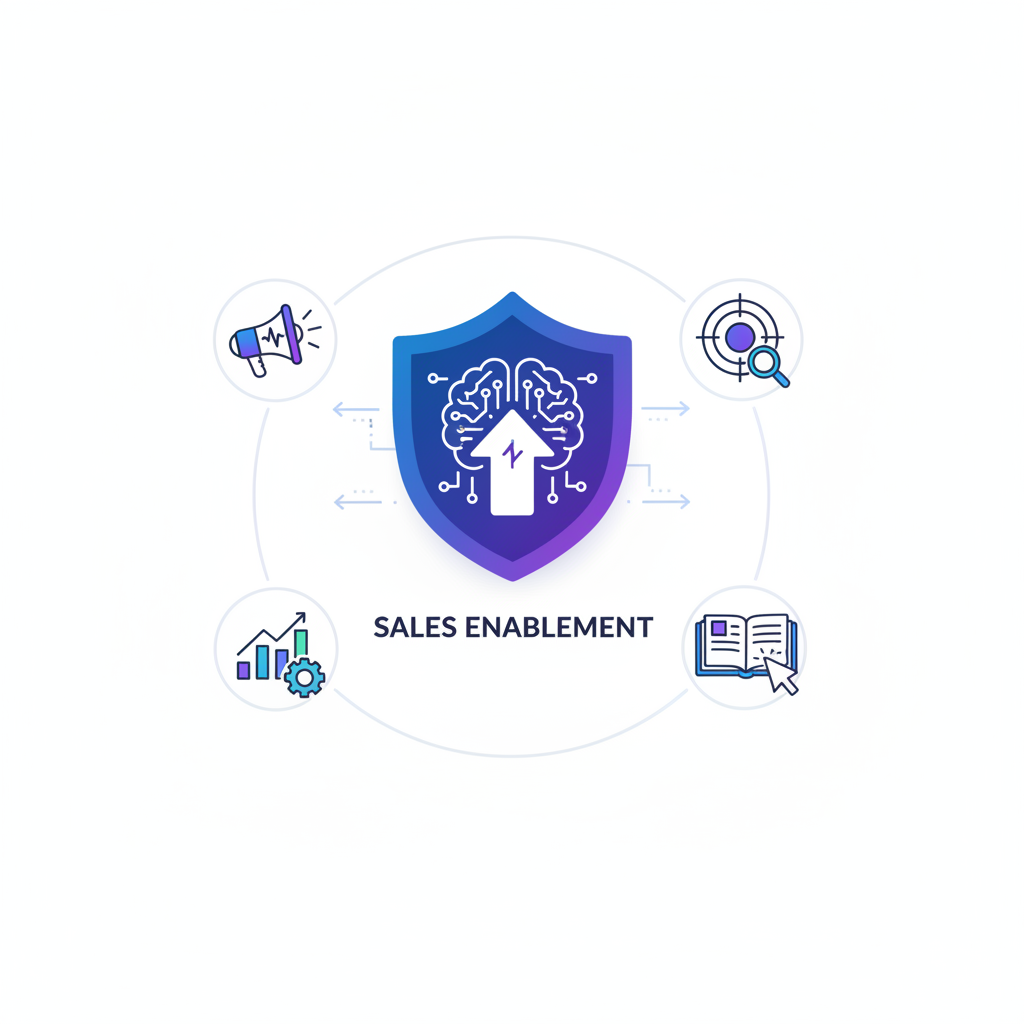Human + AI: The Collaboration Model Powering the Future of Work
Explore how human creativity and AI efficiency are collaborating to redefine content marketing in 2024. Learn about strategy, creation, distribution, and measurement in this future-forward guide.

Human + AI: The Collaboration Model Powering the Future of Work
Introduction: Navigating the Content Marketing Landscape in 2024
The digital realm is a dynamic, ever-evolving landscape, a bustling marketplace where attention is the most coveted currency. In 2024, the noise has reached unprecedented levels, with countless brands vying for the same limited pool of consumer focus. Amidst this cacophony, content marketing stands as a non-negotiable imperative for any business aiming for sustainable growth. It's no longer merely about creating content; it's about crafting a strategic narrative that resonates, educates, and converts.
Content marketing, at its core, is the art and science of creating and distributing valuable, relevant, and consistent content to attract and retain a clearly defined audience—and, ultimately, to drive profitable customer action. In today's hyper-connected world, consumers are savvier, more discerning, and increasingly immune to traditional advertising. They seek authenticity, expertise, and solutions to their problems. A robust, strategic content marketing approach is the only way to cut through the clutter, build trust, establish authority, and achieve measurable results in this competitive environment. This is where the synergy of human ingenuity and AI's analytical prowess becomes not just beneficial, but essential. The future of work in content marketing isn't about AI replacing humans, but about a powerful collaboration model where human creativity and strategic thinking are amplified by AI's efficiency and data-driven insights.
Section 1: Understanding the Core Foundations of Modern Content Marketing
Modern content marketing transcends the simplistic act of 'creating content.' It's a sophisticated strategy focused on delivering consistent value to a target audience, thereby building relationships and fostering loyalty. This approach moves beyond mere promotional material, instead offering insights, entertainment, and solutions that genuinely benefit the consumer. The shift from outbound interruption to inbound attraction is complete, making content marketing a cornerstone of contemporary business strategy.
At the heart of successful content marketing lie four key pillars: Value, Relevance, Consistency, and Audience-centricity. Value means providing information or entertainment that genuinely helps or engages your audience. Relevance ensures your content speaks directly to their needs, pain points, and interests. Consistency builds anticipation and trust, establishing your brand as a reliable source. And perhaps most critically, Audience-centricity dictates that every piece of content is created with the specific needs and preferences of your target audience in mind. These pillars are not just theoretical concepts; they are the practical cornerstones upon which effective content strategies are built, and where human insight is paramount, even as AI assists in their execution.
Why is this more critical than ever in 2024? Several factors converge to elevate content marketing's importance. Evolving consumer behavior shows a preference for self-education and authentic brand interactions. Increased competition means every brand is fighting for attention, making differentiated, high-quality content a necessity. Furthermore, sophisticated search engine algorithms, such as Google's E-E-A-T principles (Experience, Expertise, Authoritativeness, Trustworthiness), heavily reward content that demonstrates deep knowledge and reliability. AI tools can assist in analyzing these trends and optimizing content for these principles, but the human element of genuine experience and expertise remains irreplaceable in crafting truly authoritative content. This human-AI collaboration ensures that content is not only optimized for algorithms but also resonates deeply with human readers.
Section 2: Developing Your Unshakeable Content Strategy for 2024
An unshakeable content strategy begins with a profound understanding of who you are trying to reach. Defining your ideal audience goes far beyond basic demographics. It involves in-depth buyer persona development, meticulously detailing their pain points, aspirations, daily routines, preferred communication channels, and decision-making processes. Understanding their psychographics—their attitudes, values, and lifestyles—is crucial for crafting messages that truly resonate. Mapping out their user journeys, from initial awareness to post-purchase advocacy, allows you to identify critical touchpoints where content can provide maximum value. AI tools can significantly accelerate this process by analyzing vast datasets to identify patterns, segment audiences, and even suggest persona attributes. However, the human marketer’s empathy, intuition, and qualitative research remain vital for adding the nuanced understanding that AI alone cannot provide, ensuring the personas are rich and actionable.
Once your audience is clearly defined, the next step is setting clear, measurable goals for your content marketing initiatives. Implementing SMART goals (Specific, Measurable, Achievable, Relevant, Time-bound) transforms vague aspirations into concrete objectives. For instance, instead of "increase brand awareness," a SMART goal might be "increase organic website traffic by 20% within the next six months" or "generate 100 qualified leads through content downloads by Q3." These goals could encompass various objectives such as brand awareness, lead generation, sales enablement, customer retention, or thought leadership. AI can play a pivotal role here by providing predictive analytics, forecasting potential outcomes based on historical data, and suggesting optimal content types or distribution channels to achieve specific goals. This human-AI collaboration ensures that goals are not only ambitious but also data-informed and realistic.
Strategic competitor analysis is another cornerstone of a robust content strategy. This involves identifying who your direct and indirect competitors are and meticulously analyzing their content marketing efforts. What topics do they cover? Which content formats perform best for them? What are their content gaps—areas where they are not adequately serving the audience, presenting unique opportunities for your brand to differentiate? Analyzing their SEO strategies, social media engagement, and backlink profiles can reveal valuable insights. While AI-powered tools can automate much of the data collection and initial analysis, identifying true content gaps and formulating unique differentiation strategies requires human creativity, critical thinking, and market intuition. The human marketer interprets the data provided by AI, identifies strategic advantages, and crafts a unique value proposition that sets the brand apart, leveraging AI to gain an edge but relying on human insight for strategic direction.
Section 3: Content Creation Best Practices for Engagement and SEO
Effective content creation in 2024 demands a diverse approach, leveraging various formats to cater to different audience preferences and stages of the buyer journey. Beyond traditional blog posts, consider the power of video content, which continues its dominance across platforms. Infographics offer digestible visual information, while podcasts provide an auditory experience for on-the-go consumption. Whitepapers and case studies establish authority and provide in-depth insights, crucial for B2B audiences. Interactive content, such as quizzes or polls, boosts engagement, and concise social media snippets are essential for capturing fleeting attention. The human element here is in understanding the narrative and choosing the right format, while AI tools like ChatGPT, Claude, Gemini, or Jasper can assist in generating initial drafts, outlines, or even repurposing existing content into new formats, significantly accelerating the creation process.
Crafting engaging and valuable content is an art form, even with AI assistance. It begins with compelling storytelling that connects with your audience on an emotional level. Clear, concise messaging ensures your point is understood without ambiguity. Irresistible headlines are crucial for capturing attention in a crowded digital space, acting as the gateway to your content. The importance of visual appeal cannot be overstated; high-quality images, videos, and graphics break up text, enhance understanding, and make content more shareable. While AI writing assistants like Copy.ai or Writesonic can generate headlines and initial drafts, and tools like Grammarly or QuillBot can refine language, the human touch is indispensable for infusing content with unique voice, genuine emotion, and strategic intent. Humans provide the creative spark and ensure authenticity, while AI handles the heavy lifting of drafting and refinement.
Mastering on-page SEO optimization is non-negotiable for ensuring your valuable content is discoverable. This involves a meticulous approach to several elements. Title tags and meta descriptions must be compelling and keyword-rich, enticing users to click from search results. Header tags (H1, H2, H3) structure your content logically for both readers and search engines. Internal linking strategies guide users and search engine crawlers through your site, distributing link equity and enhancing user experience. Image alt text improves accessibility and provides additional SEO signals. A clean, descriptive URL structure also contributes to better search rankings. AI tools can assist in keyword research, suggest optimal meta descriptions, and even analyze existing content for SEO gaps. However, the human SEO specialist's strategic understanding of search intent, competitive landscape, and algorithm nuances ensures that AI-generated suggestions are implemented effectively and ethically, leading to truly optimized content that ranks and converts.
Section 4: Strategic Content Distribution and Promotion to Maximize Reach
Creating exceptional content is only half the battle; strategic distribution and promotion are essential to ensure it reaches its intended audience. Leveraging owned channels is the foundational step. Your website and blog are your primary content hubs, requiring consistent updates and optimization for user experience and search engines. Email newsletters remain one of the most powerful tools for direct communication, allowing you to nurture leads and build a loyal community. Organic social media profiles, across platforms like LinkedIn, X (formerly Twitter), Facebook, and Instagram, serve as vital distribution points, enabling direct engagement and content sharing. AI can assist in optimizing posting schedules, segmenting email lists for personalized content delivery, and even generating variations of social media copy to test for maximum engagement, freeing up human marketers to focus on community building and strategic messaging.
Beyond owned channels, harnessing earned channels can significantly amplify your reach and build credibility. Strategies for PR outreach involve pitching your valuable content to journalists and media outlets, securing mentions and backlinks. Influencer marketing collaborations, where you partner with individuals who have established authority and trust with your target audience, can introduce your content to new, highly engaged communities. Guest posting opportunities on reputable industry blogs not only expose your content to a wider audience but also build valuable backlinks, enhancing your domain authority. Securing media mentions, whether through expert commentary or feature articles, positions your brand as a thought leader. While AI can help identify potential influencers, draft outreach emails, and monitor media mentions, the human element of relationship building, negotiation, and crafting personalized pitches remains paramount for successful earned media strategies.
Exploring paid channels offers a powerful way to accelerate content visibility and target specific audiences with precision. Effective use of social media advertising allows for granular targeting based on demographics, interests, and behaviors, ensuring your content reaches the most relevant eyes. Search engine marketing (SEM), through platforms like Google Ads, places your content directly in front of users actively searching for related topics. Native advertising blends your content seamlessly into publisher sites, offering a less intrusive promotional experience. Content syndication platforms extend the reach of your articles to a network of relevant websites. AI plays a transformative role here, optimizing ad spend, dynamically adjusting bids, personalizing ad copy, and identifying high-performing audience segments. However, human oversight is crucial for setting campaign objectives, interpreting performance data, and making strategic adjustments to ensure paid efforts align with overall marketing goals and deliver a positive return on investment. The collaboration between human strategy and AI execution is key to maximizing the impact of paid distribution.
Section 5: Measuring Content Performance and Demonstrating ROI
Measuring content performance is not just about tracking numbers; it's about understanding the impact of your efforts and demonstrating a tangible return on investment (ROI). Identifying Key Performance Indicators (KPIs) is the first critical step. These can include website traffic (page views, unique visitors), user engagement metrics (time on page, bounce rate, pages per session), conversion rates (leads generated, sales attributed to content, form submissions), social shares and comments, and backlinks acquired. The specific KPIs will depend on your content marketing goals, but the human marketer's role is to define these strategically, ensuring they align with business objectives. AI tools can then assist in collecting, aggregating, and even identifying anomalies or trends within this vast dataset, providing a clearer picture of performance.
To effectively track these KPIs, essential tools for measurement are indispensable. Google Analytics 4 provides comprehensive insights into website traffic and user behavior, offering a unified view across web and app interactions. Google Search Console offers crucial data on search performance, including keyword rankings, impressions, and click-through rates. Social media analytics platforms built into each network (e.g., Facebook Insights, LinkedIn Analytics) provide data on reach, engagement, and audience demographics. CRM data connects content interactions to lead progression and sales conversions. Specialized content marketing platforms can integrate these data points for a holistic view. While these tools collect raw data, AI can process and visualize this information, identifying correlations, predicting future trends, and even suggesting areas for optimization. This human-AI collaboration transforms raw data into actionable intelligence, making the measurement process more efficient and insightful.
Understanding attribution models is crucial for accurately determining which content touchpoints contribute most effectively to conversions and customer journeys. Different models—such as first-touch, last-touch, linear, time decay, or position-based—assign credit to various interactions along the customer path. Multi-touch attribution models provide a more nuanced view, distributing credit across multiple interactions. AI excels in processing complex multi-touch attribution data, identifying the most influential content pieces and channels across intricate customer journeys. This allows human marketers to move beyond simplistic last-click attribution, gaining a deeper understanding of content's true impact and optimizing future strategies based on a more accurate picture of ROI. The human provides the strategic framework, and AI provides the analytical depth.
Section 6: Advanced Content Marketing Tactics for a Competitive Edge
To truly stand out in a saturated market, advanced content marketing tactics are essential. Implementing interactive content is a powerful way to boost engagement and gather valuable audience data. Developing quizzes, polls, calculators, assessments, and interactive infographics transforms passive consumption into an active experience. AI can play a significant role in generating ideas for interactive elements, personalizing quiz outcomes based on user input, and even analyzing the data collected from these interactions to refine future content strategies. The human designer, however, ensures the user experience is intuitive and the content is genuinely valuable and entertaining.
Achieving personalization at scale is another advanced tactic that leverages the power of AI. Moving beyond basic segmentation, personalization involves utilizing dynamic content that adapts to individual user preferences, behaviors, and past interactions. This can include tailored recommendations for articles or products, personalized email sequences, and website experiences that change based on a user's browsing history. AI-powered recommendation engines and content management systems can deliver hyper-personalized experiences to millions of users simultaneously, making each interaction feel unique and relevant. However, human oversight is critical for setting the parameters for personalization, ensuring ethical data usage, and maintaining brand consistency across all personalized touchpoints. The human defines the personalization strategy, and AI executes it at an unprecedented scale.
Establishing thought leadership through original research is a highly effective, albeit resource-intensive, way to gain a significant competitive edge. This involves conducting proprietary surveys, analyzing unique datasets, and publishing comprehensive industry reports. While the conceptualization and interpretation of research findings require profound human expertise and strategic vision, AI can be an invaluable partner in the process. AI tools can assist in analyzing large datasets, identifying emerging trends, and even drafting initial summaries of findings. The human researcher designs the methodology, ensures data integrity, and crafts the compelling narrative that transforms raw data into influential thought leadership content, demonstrating a powerful human-AI collaboration in generating unique insights.
Section 7: Future Trends Shaping Content Marketing in 2024 and Beyond
The content marketing landscape is in a constant state of flux, and staying ahead requires an understanding of emerging trends. Perhaps the most significant trend is the continued rise of AI and automation. In 2024 and beyond, AI's applications in content marketing will become even more sophisticated. This includes advanced content generation, where AI models like ChatGPT, Claude, and Gemini can produce high-quality drafts, brainstorm ideas, and adapt content for different tones and audiences. Hyper-personalization, driven by AI, will deliver increasingly tailored content experiences. Predictive analytics will enable marketers to anticipate content performance and audience needs, while AI-powered tools will optimize content for various platforms and search engines in real-time. This isn't about AI replacing human creativity, but augmenting it, allowing humans to focus on strategy, empathy, and high-level creative direction.
Video content dominance is another undeniable trend that will only intensify. The evolution of short-form video, popularized by platforms like TikTok and Instagram Reels, demands concise, engaging narratives. Interactive video experiences, where viewers can influence the narrative or explore different paths, are becoming more sophisticated. AI can assist in video script generation, identifying trending topics, optimizing video titles and descriptions for SEO, and even aiding in basic video editing tasks, streamlining the production process. However, the human touch in storytelling, visual direction, and authentic presentation remains crucial for creating truly impactful video content.
Finally, the growth of audio content continues its upward trajectory. Podcasts have moved from niche to mainstream, offering deep dives into various topics and building dedicated listenerships. Audio articles, which allow users to listen to blog posts, cater to multitasking audiences. Voice search optimization is becoming increasingly important as more consumers use voice assistants like Google Assistant, Siri, and Alexa to find information. AI can assist in transcribing audio, generating podcast outlines, and optimizing content for voice search by identifying natural language patterns. The human element ensures the audio content is engaging, well-produced, and provides genuine value to listeners, leveraging AI to enhance accessibility and discoverability.
Frequently Asked Questions (FAQs) About Content Marketing
How often should I publish new content to stay competitive?
The ideal publishing frequency varies significantly based on your industry, audience, and available resources. While consistency is key, quality always trumps quantity. For many businesses, publishing 2-4 high-quality blog posts per month, complemented by regular social media updates and email newsletters, is a good starting point. AI tools can help analyze competitor publishing schedules and audience engagement patterns to suggest an optimal frequency, but ultimately, it's about what your team can sustain while maintaining high standards.
What's the 'best' content format for achieving specific marketing goals?
There isn't a single 'best' format; rather, the most effective format depends on your specific goal and target audience. For brand awareness, short-form video and engaging social media posts might be ideal. For lead generation, whitepapers, webinars, or interactive tools often perform well. For building thought leadership, long-form articles, original research, and podcasts are highly effective. AI can help analyze past performance data across different formats to identify what resonates most with your audience for various objectives, guiding your strategic choices.
How long does it typically take to see tangible results from content marketing efforts?
Content marketing is a long-term strategy, not a quick fix. While some initial boosts in traffic or engagement might be seen within 3-6 months, significant, sustainable results—such as substantial organic traffic growth, consistent lead generation, and improved brand authority—typically take 6-12 months, or even longer for highly competitive niches. AI can provide data-driven projections based on your efforts and market conditions, but patience and consistent execution, guided by human strategy, are crucial for long-term success. It's an investment that compounds over time.
Conclusion: Your Path to Content Marketing Mastery in 2024
In the dynamic and increasingly noisy digital landscape of 2024, content marketing remains an indispensable engine for business growth. This comprehensive guide has underscored the critical importance of a strategic, adaptable, and audience-centric approach. We've explored how a clear strategy, built on deep audience understanding and measurable goals, forms the bedrock of success. We delved into the best practices for creating engaging, SEO-optimized content across diverse formats, and outlined effective strategies for distribution and promotion to maximize reach. Crucially, we emphasized the necessity of rigorous measurement and ROI demonstration, along with advanced tactics for gaining a competitive edge.
The overarching theme, woven throughout these discussions, is the transformative power of human-AI collaboration. The future of work in content marketing is not about AI replacing human ingenuity, but about AI amplifying it. From audience analysis and content generation to distribution optimization and performance measurement, AI tools serve as powerful co-pilots, handling repetitive tasks, providing data-driven insights, and enabling hyper-personalization at scale. However, the human marketer's creativity, empathy, strategic vision, and ethical judgment remain irreplaceable. Your path to content marketing mastery in 2024 and beyond lies in embracing this synergy—continuously learning, experimenting with new technologies, and adapting your strategies to the ever-changing digital landscape, always with the human touch at the helm, guided by AI's unparalleled efficiency.
Featured Tools

10Web is an AI-powered WordPress platform that offers automated website building, hosting, and optimization with AI assistance for content and image generation.

A global creative platform connecting businesses with freelance designers for custom graphic design projects.

Acquire.io is a customer engagement platform offering live chat, AI chatbots, co-browsing, and video chat to enhance customer support and sales.

A customer experience automation platform combining email marketing, marketing automation, and CRM with AI-powered personalization.

An AI-powered customer service automation platform that delivers personalized, instant support across various channels.
Top AI Categories
Related Articles

Top 10 AI Tools for Fashion Bloggers
Discover insights about AI tools and technology.

Top 10 AI Tools for Public Relations Content
Discover insights about AI tools and technology.

Top 10 AI Tools for Sales Enablement
Discover insights about AI tools and technology.